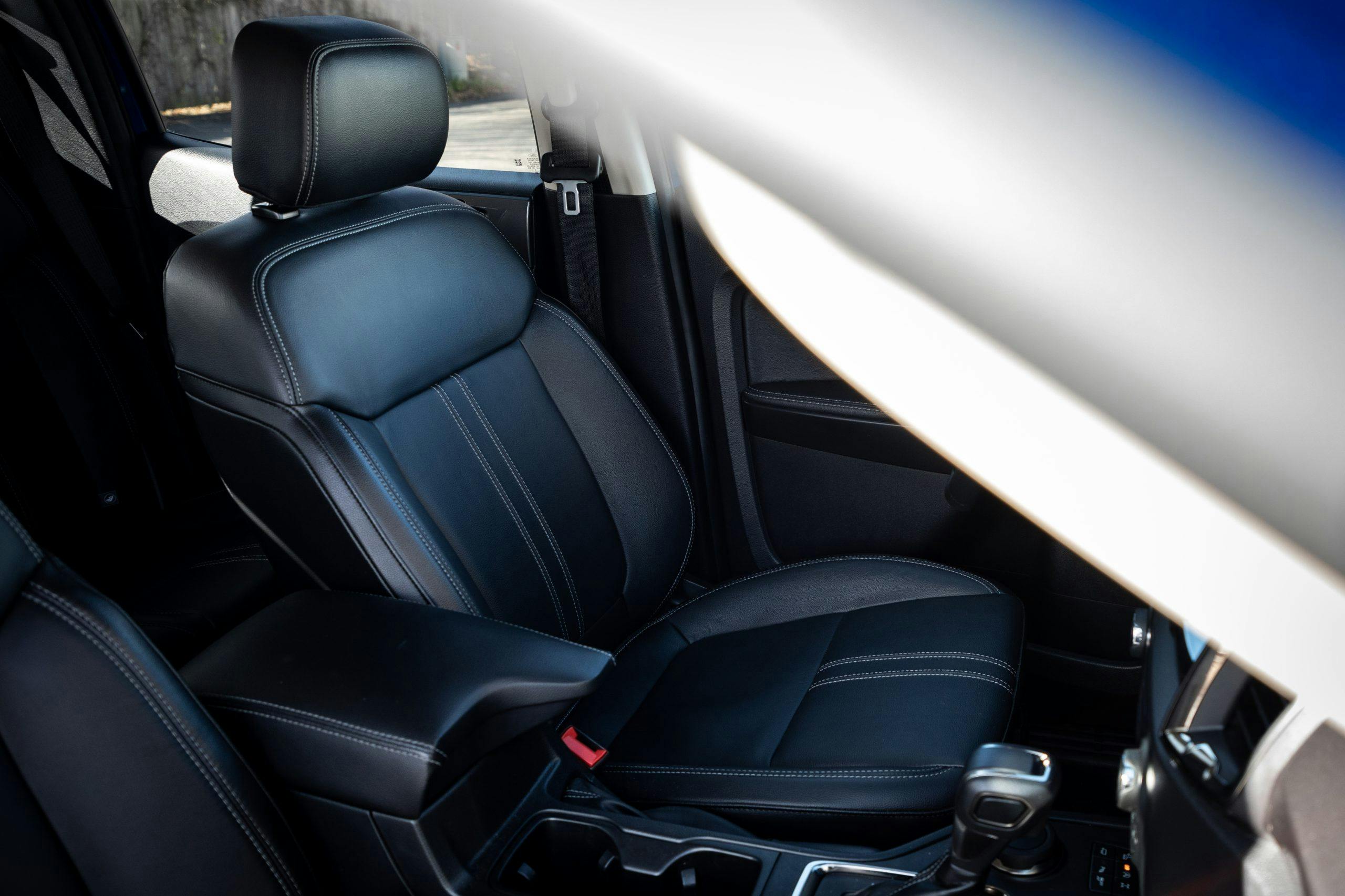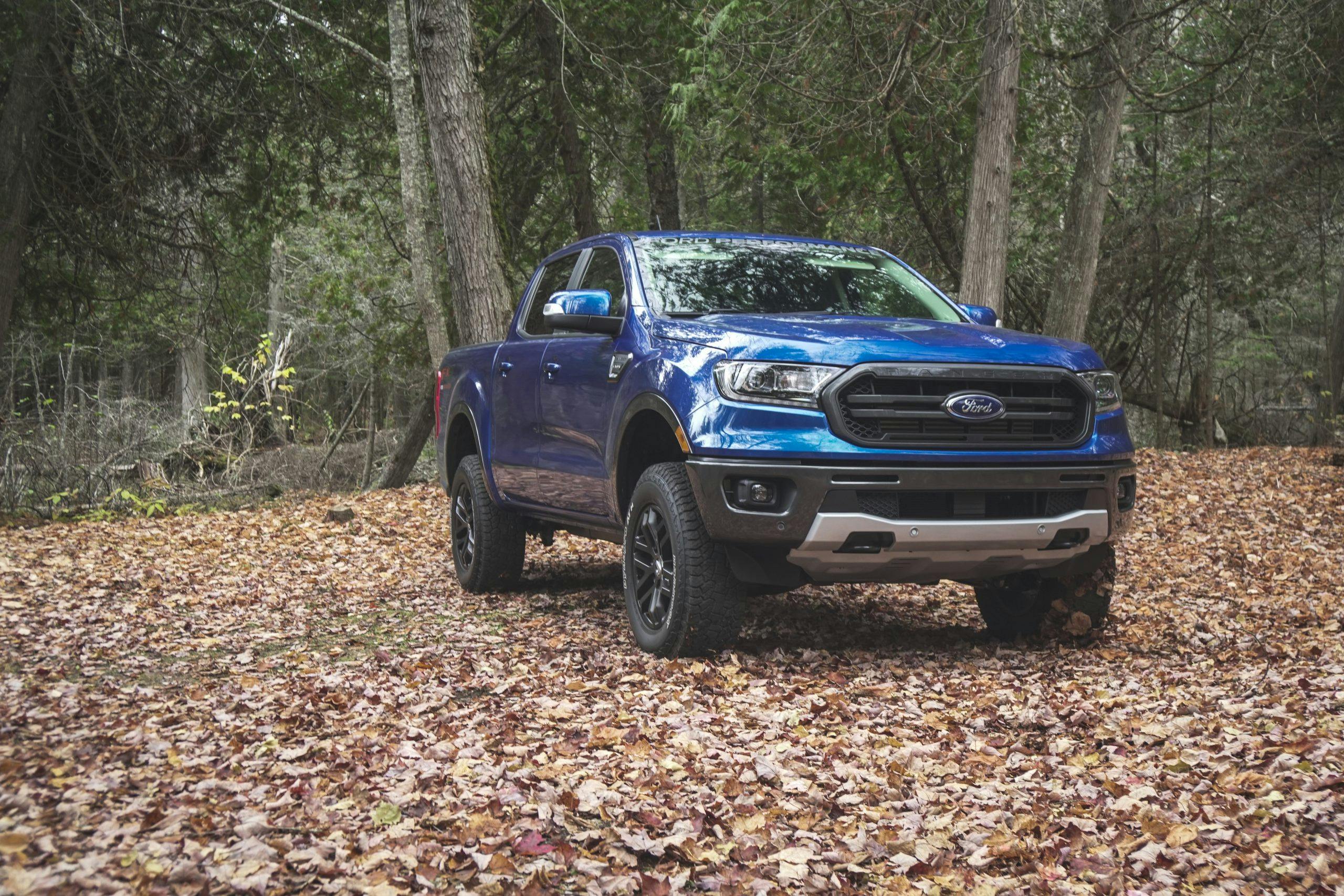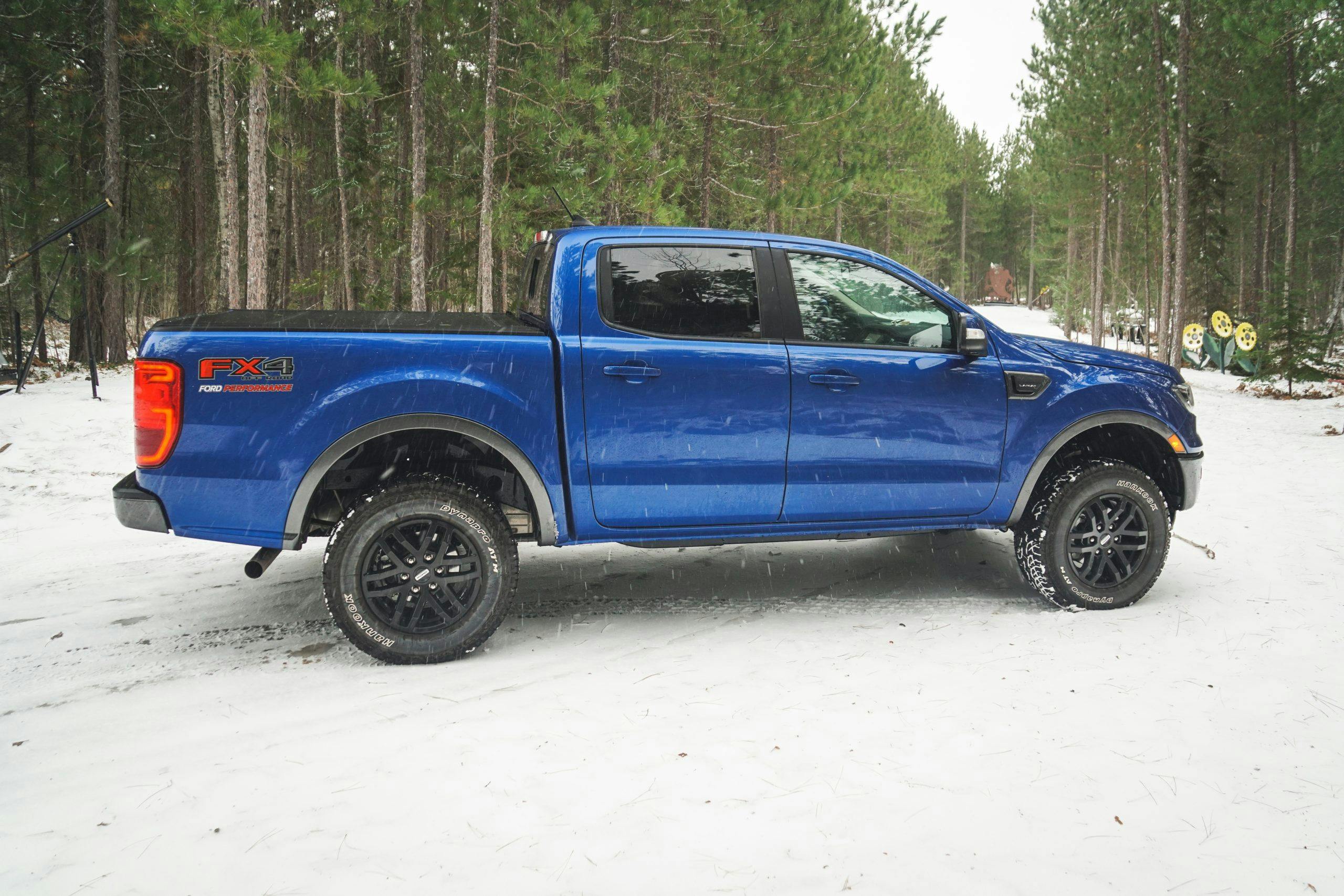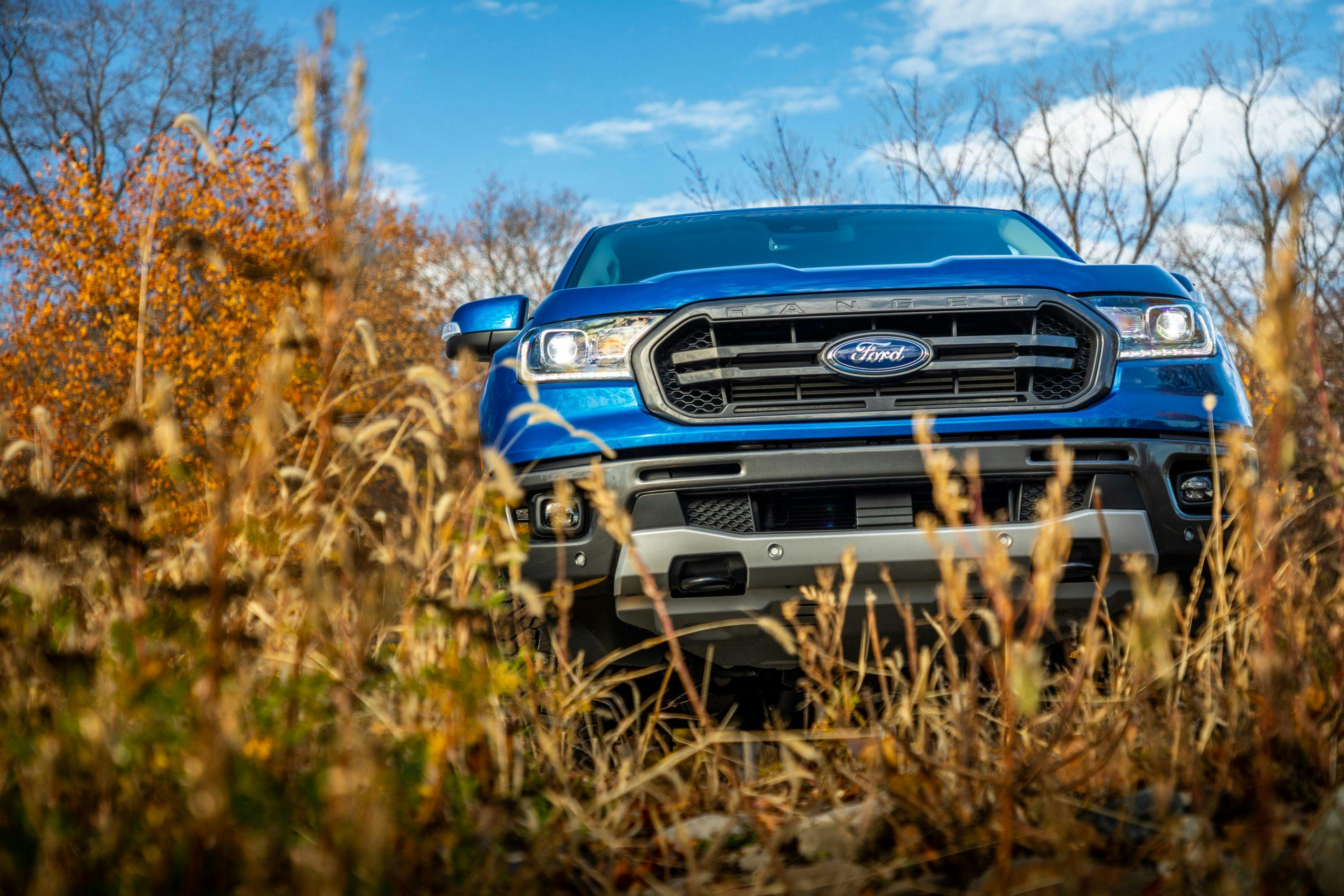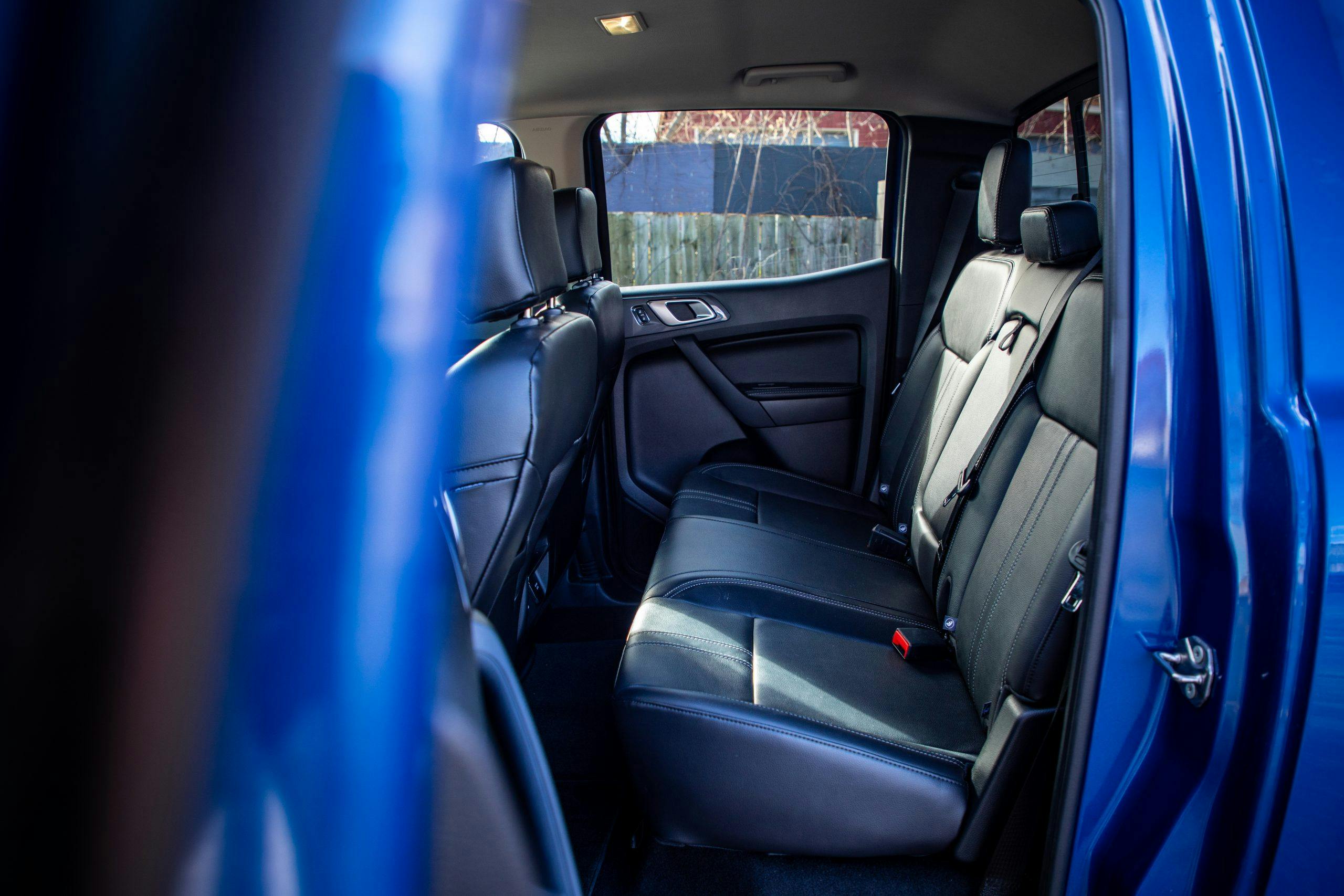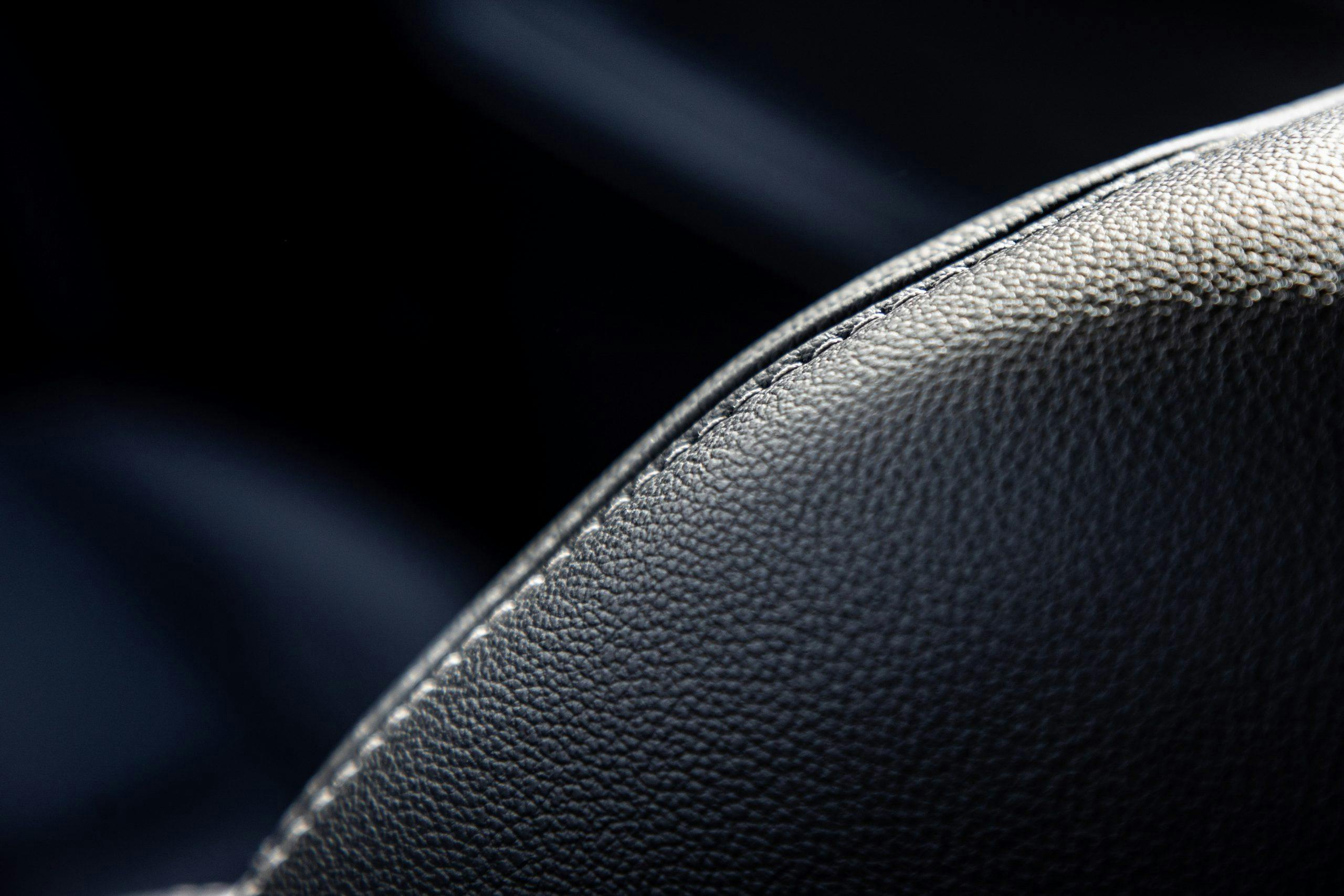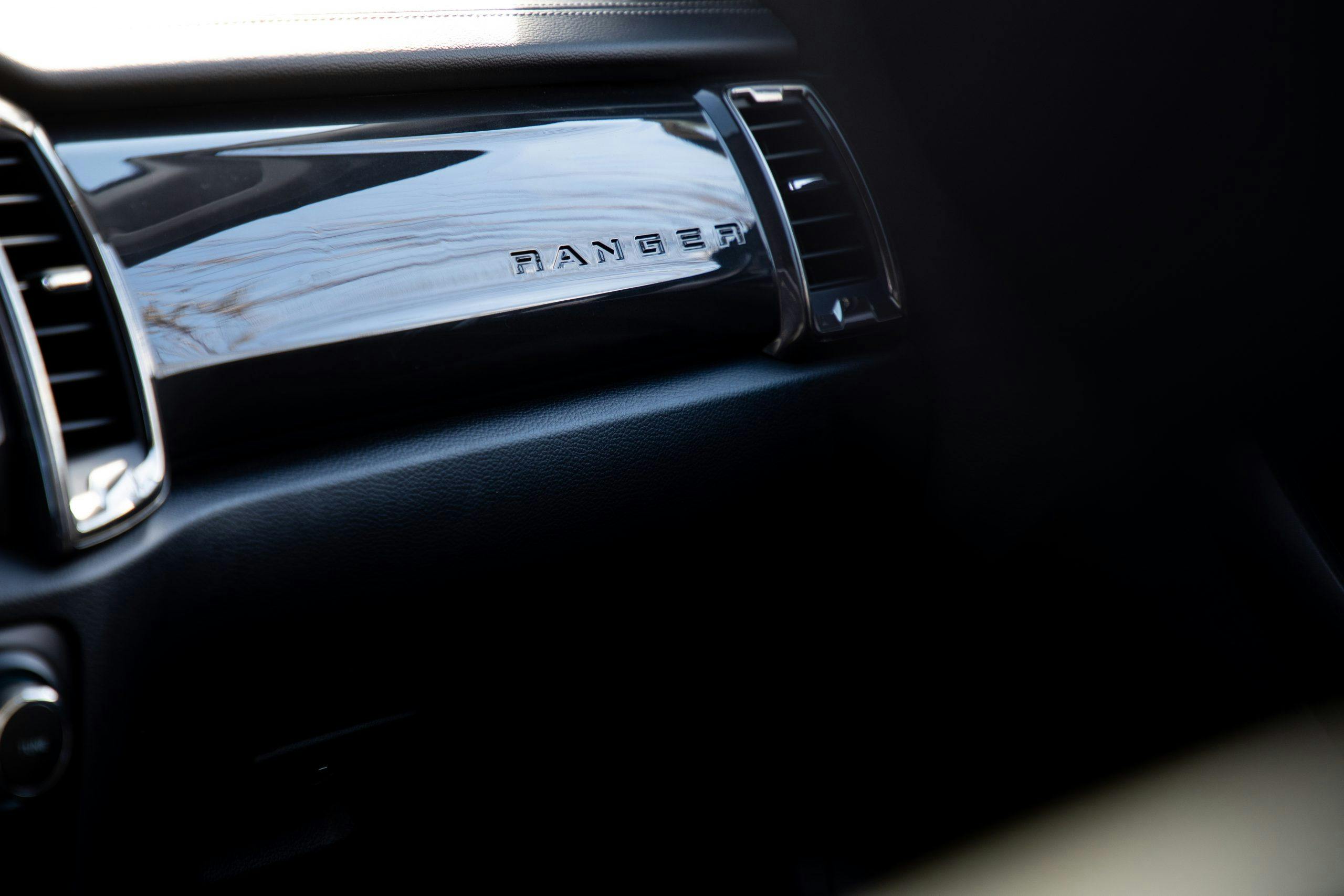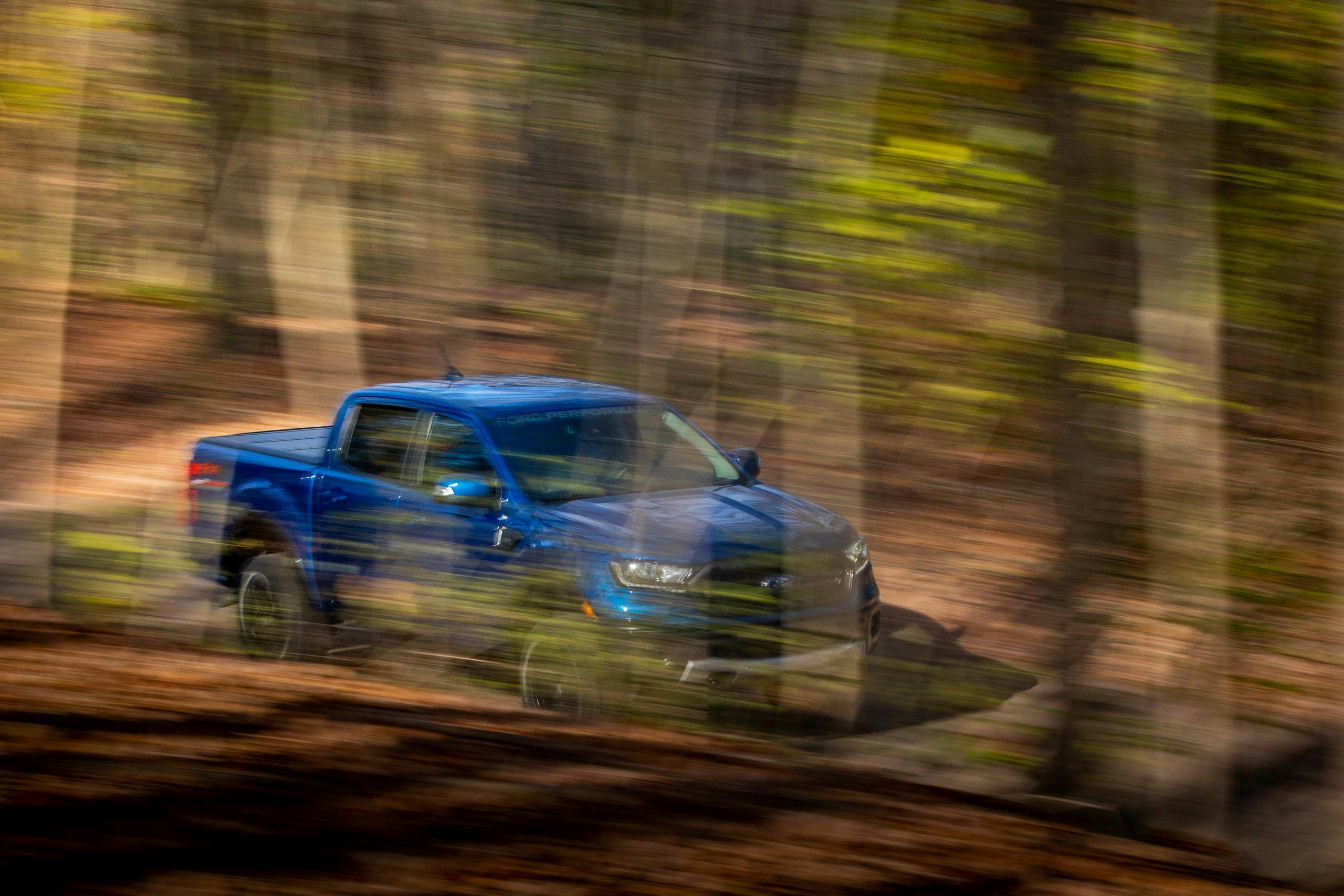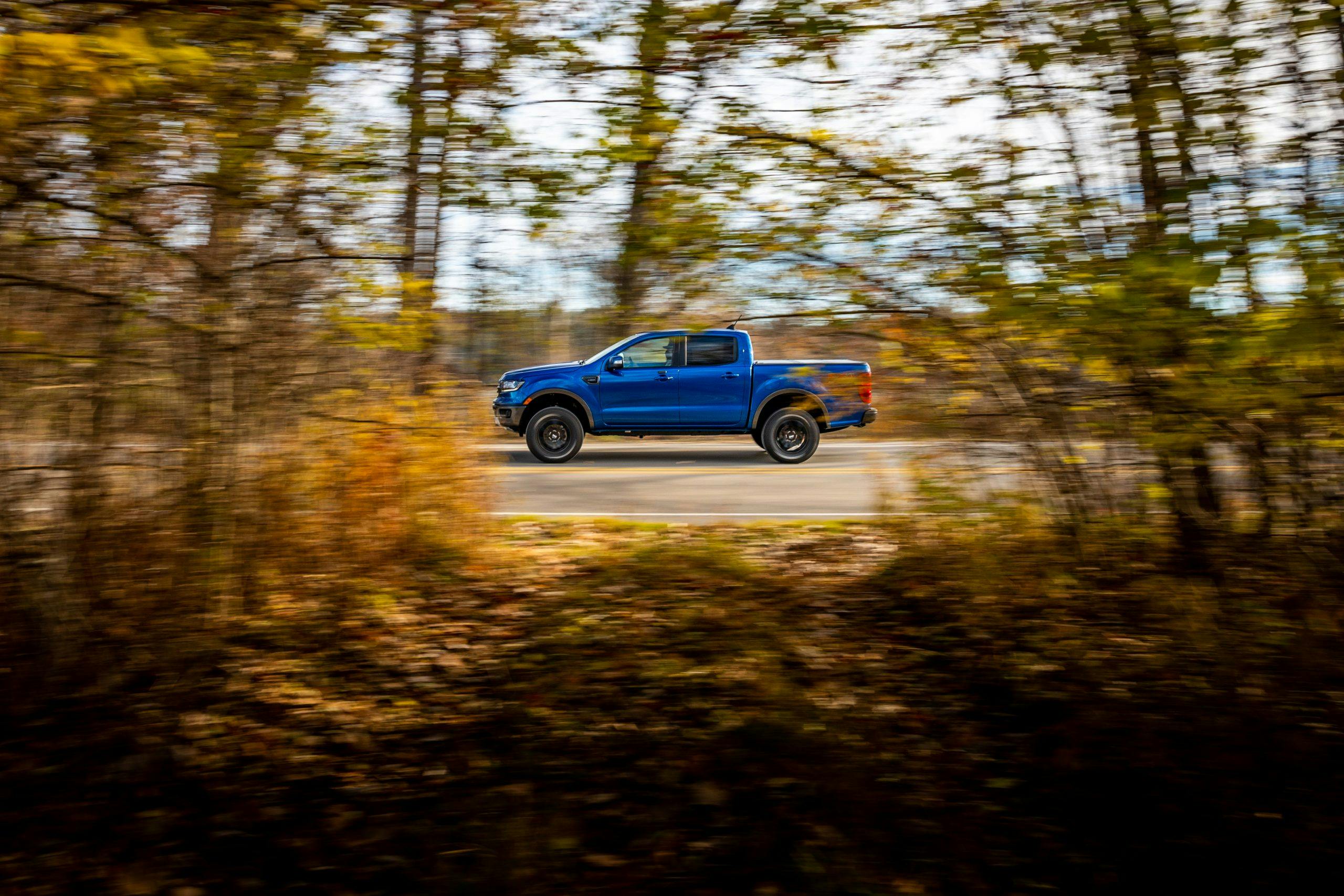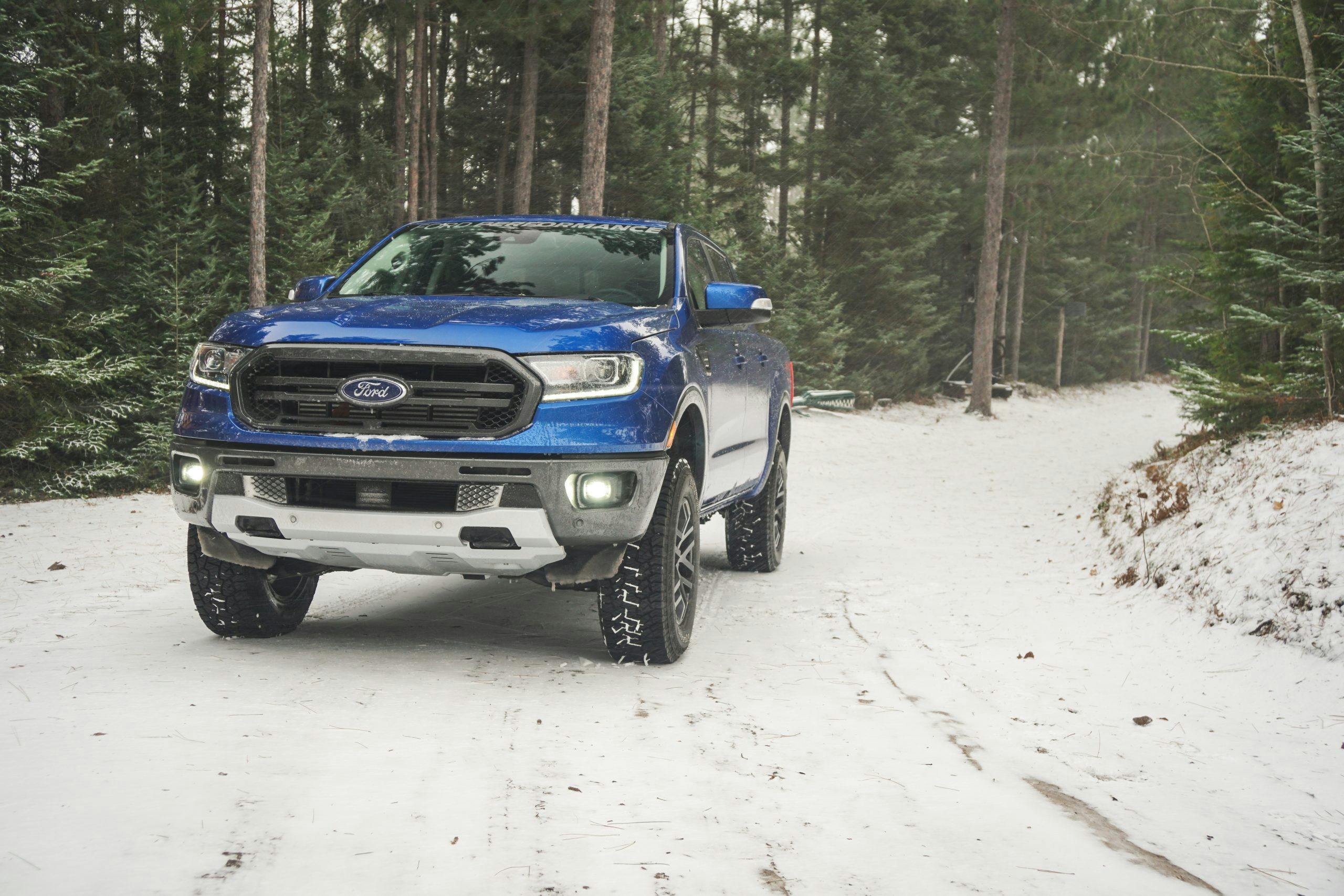Review: 2020 Ford Ranger Lariat 4×4
The third time we passed a tree snapped clean in half—its foot-and-change-thick trunk now splintered across Michigan highway 28—I began to get nervous. It was the first of November, and true to form, Lake Superior hadn’t wasted a single minute spinning up Gordon Lightfoot’s fabled weather. The white-out snow engulfing the road would have been the scariest part, were it not for the wind gusts bordering on interstate speeds. If ever there was a time for a compact truck, with its relatively modest dimensions and lower tendency to spinnaker across a wind-swept freeway, this was it.

In 2019, Ford announced its return to the mid-size pickup battle, with a reincarnated Ranger nameplate. The move was an about-face from years prior, when Ford had insisted that it needn’t do battle with the Chevy Colorados, Toyota Tacomas, and Nissan Frontiers of the world because it had the right F-150 for any and every buyer. Since the Ranger’s return, we’ve been treated to some wild SEMA concepts, blacked-out trim packages, a few factory-backed performance packages—one of which is featured on our tester—and even a new top-of-the-dirt-pile Tremor off-road package. From the outset, Ford pitched the Ranger as an aid to your adventure arsenal more than a smaller truck with which to do work, figuring that the way to younger buyers’ hearts was the allure of the outdoors. That was all well and good until the Ranger platform’s other stablemate—yonder Ford Bronco—came along, tugging the adventure crowd along with it by their para-cord heartstrings. Still—Ford moved nearly 75,000 Rangers through the first three quarters of 2020, the worst year for car sales in recent memory. Someone’s buying these.

Ford kindly dropped off a 2020 Ranger Lariat 4×4 with a SuperCrew cab (crew cab in Ford speak) and a five-foot bed at Hagerty’s Ann Arbor, Michigan office. Our range-topping tester wore gorgeous Lightning Blue paint and came stacked with features like powered and heated front seats wrapped in leather, LED headlamps and taillamps, and an eight-inch touchscreen displaying Ford’s Sync 3 infotainment system. The options list included equipment group 501A, which for $2005 adds a 10-speaker B&O stereo, HD radio, and remote start, among other things. On the business end, the optional $1295 FX4 off-road package entitled our tester to a Dana locking rear axle and steel underbody armor. Toss in a $995 tonneau cover, $495 spray-in bed liner, along with a few miscellaneous items, and the base price of this $38,675 tester jumped $6530 to ring the register for a hefty $46,400, including a $1195 destination fee.
The kicker: That price is before you add in the dealer-installed Performance Package Level 1 (PPL1), which costs another $2495 plus installation. The package provides Fox 2.0 monotube dampers tuned by Ford Performance, 17-inch Dyno Gray wheels, an off-road leveling kit that props the front end up almost two inches to clear large tires, and a slightly gaudy F O R D P E R F O R M A N C E windshield banner. The package bumps approach and breakover angles from 28.7 and 21.5 degrees to 34.8 and 23.7 degrees, respectively. Problem is, it also raises the LED headlights to eye-level with most vehicles that you’ll pass on the road. After about the eighth car angrily flashing its brights at you, this will get extremely old. You’ve been warned.
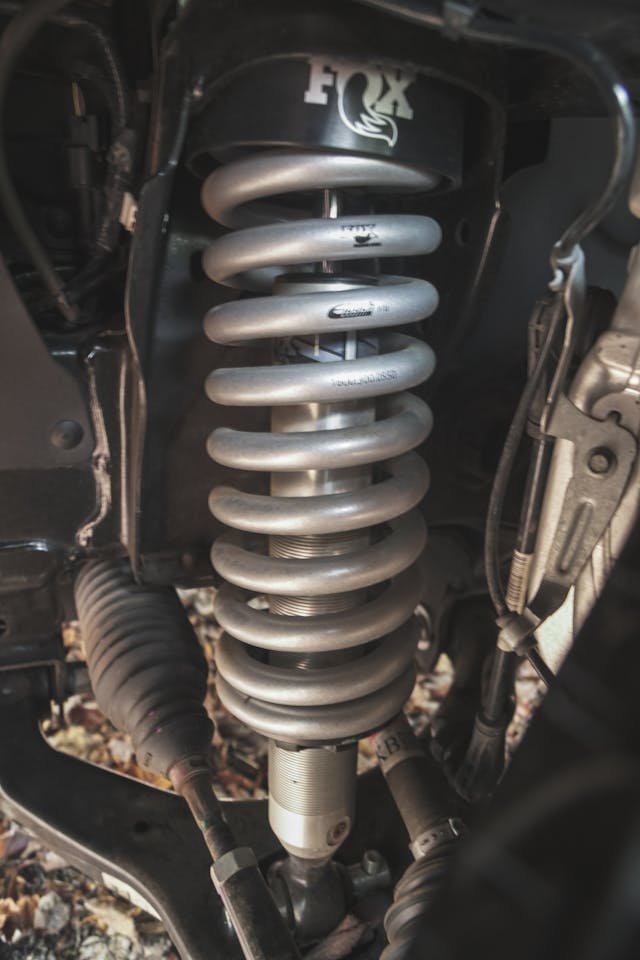
A fully-boxed steel frame with six cross-members undergirds the Ranger. The 126.8-inch wheelbase is uniform across both cab sizes, forcing buyers to make a hard choice between a short bed or a cramped cabin. This differs from the Toyota Tacoma and the Chevy Colorado, which both offer two bed lengths with their crew cab models. It’s an extremely handsome truck, windshield banner be damned. Max Wolff’s team designed a muscular-looking pickup with a quiet, confident snout free of matte-black lower air dams—the absolute worst part about the Colorado’s schnoz—and a simple but effective body to cash the check written by the front end. The leveling kit does miracles for the side profile of the truck—two inches up front balances the profile out and makes an extremely rugged looking little truck.
The Ranger’s interior is certainly nicer than the Colorado’s, but that’s not saying much. There are a few things to nit-pick. For starters, why anyone allowed the power mirror adjuster to reside just left of the steering wheel, in direct eye line with said steering wheel instead of on the driver door’s switch panel like normal, is beyond me. Taller riders (I’m a hair under six-foot) may also take issue with the positioning of the HVAC controls. Their angle makes climate adjustment a guessing game during darker drives, especially with such weak backlighting. You can access many HVAC controls within SYNC, but they’re a few menus deep and similarly annoying.

The driving position is less upright than you’d get in a full-size pickup, but not as legs-out-front as you’ll find in a Tacoma. Skip the Lariat’s leather seats; you can get away with the XLT’s premium cloth just fine, especially since you can get them heated. If you’re my height or taller, you’ll do well to avoid the back seats altogether—they make better parking spots for daypacks and bouldering equipment than useful places for hind ends.
Ford’s sole powertrain offering is a 2.3-liter turbocharged inline four-cylinder found in everything from the Focus RS to the Explorer. Here, it’s good for 270 horsepower and 310 lb-ft of torque. It’s torquier than the 3.6-liter V-6 in the Colorado (275 lb-ft) or the 3.5-liter V-6 in the Tacoma (265 lb-ft). That two-three bolts to a Ford and GM co-developed 10-speed automatic transmission with three overdrive gears and a 3.73:1 final drive ratio. Rear-wheel drive is standard, but 4×4 is available with either an open rear differential or a locking rear diff when you spec that FX4 option box. (Two-wheel-drive Rangers can spec an FX2 package that scores the same locking diff and body armor.) The transfer case features a 2.717:1 four-low ratio.
Off the line, that torque is immediately apparent. The Ranger scampers out of its own way with a muted thrum that grows in intensity, but not pitch. There’s none of the raspy, thrashing top-end that plagues Colorados, Tacomas, and Jeep Gladiators alike, probably because the gearbox won’t let the motor anywhere near redline. Peak torque arrives at just 3000 rpm; winding the engine out isn’t as necessary. Around town, this powertrain combo stays largely in the background. But once speeds crest the 50-mph mark, you’ll occasionally catch the gearbox two gears too high, the engine spinning low rpm and off-boost. Ask it for a few mph more, and the whole thing goes limp as a cooked noodle. Only when you really boot it does it hurriedly drop a few cogs and rear its head. Ten forward drive gears might be too many for this small of an engine when cruising.

Unless you’re towing, in which case every gear offers precious seconds in the engine’s power band as you lug, in our case, a flat-bed trailer and an oft-videoed Austin Healey around town. The Ranger’s max towing capacity is 7500 pounds. We didn’t clear half that, but were impressed with how even hauling 3000-ish pounds, the Ranger still got a move on rather nicely. Ford’s towing mode holds gears longer before upshift and triggers downshifts much earlier than it would unladen, helping slow the caravan with engine braking. A reminder: Although all mid-size trucks can tow, regular haulers of anything more than a single jet ski would do well to head straight to the full-size aisle.
The Fox suspension that PPL1 brings is sublime, soft enough to cope with the winter-battered roads in and around Traverse City. On the dirt roads we plodded through to get to prime hiking trails, those monotube dampers did their darndest to soak up the beating doled out by the craters and potholes that turned away lesser vehicles before their destination. Add in some speed on the rougher roads, and you can still feel the back axle hop a bit through the nastier divots. Ford was keen to clarify that PPL1 isn’t a get-Raptor-quick kit, but more of a factory-backed extension of what it saw its customers changing on their trucks anyways. The front end feels like any road-going crossover with heel inserts, a boon for the ribboning portions of highway 58 west of Munising, Michigan.
At the end of the day, the Ranger is still a bit of a hard sell—especially as a range-topping Lariat trim. Among mid-size competition, a brand-new Colorado ZR2—the gold standard for fun, adventurous midsize pickups—can be had for several thousand less than this thing. Colorado Z71s will barely clear the $40K mark while offering a better driving experience for day-to-day living. Tacomas will hold their value in ways of which Rangers can only dream. The sweet spot is a modestly optioned XLT trim, if you absolutely have to go Ranger. (You can add the performance packages onto any of the trims after the fact.)
The biggest challengers to this truck come from inside the Blue Oval itself. Ford is the best in the business at selling an half-ton to anyone who so much as thinks about a new car. Beyond the $40K mark, the only thing keeping most truck buyers out of an F-150 is a lack of parking space. Worse yet: The Ranger’s platform-mate, the Bronco, enjoys rose-tinted brand cachet and years of hyped anticipation, particularly with the adventure crowd that Ford was hoping to entice when the Ranger first returned. It’s hard to see anyone with a real penchant for adventure opting for this pickup rather than a Bronco or—whisper it—a Bronco Sport. In a vacuum, this is a likeable pickup worthy of your consideration. In the broader market, however, it gets overtaken by alternatives, the best of which come from the Blue Oval itself.
2020 Ford Ranger Lariat 4×4 SuperCrew
Price: $46,400, including $1195 destination fee (Performance Package Level 1 costs $2495 before dealer installation)
Highs: Handsome exterior, excellent Fox suspension, refined engine.
Lows: Puzzling interior layout, our tester’s price puts it squarely in the line of the Colorado ZR2. Too many great alternatives, not the least of which comes with the same frame.
Summary: Ford did the Ranger dirty by plopping the Bronco on the same frame. Chevy did the Ranger dirty by making the Colorado (in Z71 and ZR2 forms). Unless you’re squeezed for space and still need a bed, just grab an F-150.
